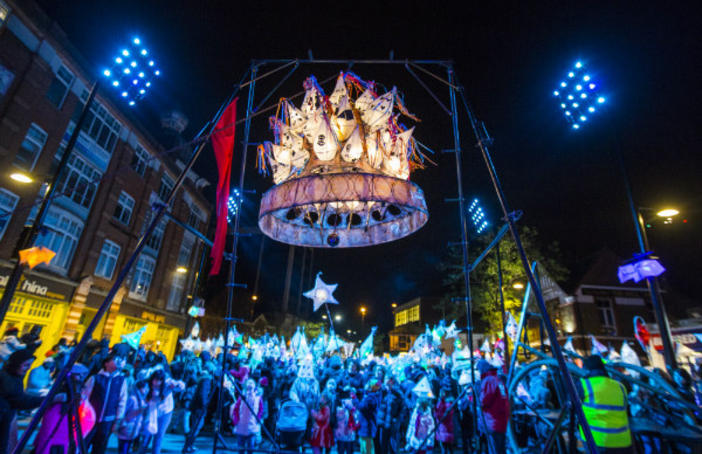Blog Post
The unusual suspects
Sarah B Davies explores the audience data that shows Creative People and Places is reaching people new to the arts

Research by The Audience Agency shows that Creative People and Places (CPP) is reaching individuals and communities who historically have not been regular participants in the arts. The research is based on data from the first year of the programme.
In the first year of the national analysis of CPP participants for the National Evaluation, 15 of the 21 CPP projects submitted a sample of postcodes gathered at their events. The Audience Agency profiled the postcodes using Mosaic and Audience Spectrum segmentation tools. This gives us a national picture and insight into the likely characteristics of each postcode area by socio-economic status and by likely participation and engagement with the arts.
These early results showed that nationally the majority of CPP audiences belong to one of four Audience Spectrum groups: Facebook Families, Trips and Treats, Up Our Street and Dormitory Dependables. It also showed they mainly belonged to three Mosaic groups: Transient Renters, Aspiring Homemakers and Family Basics.
Overall, 75% of our audience and participants come from neighbourhoods with low or medium engagement in the arts. 50% of participants come from neighbourhoods with the lowest attendance, compared to only a third nationally.
Our audiences
The results in the first year of analysis are encouraging: for a programme aimed at people in areas of low participation we would hope to find that different approaches to programming, community engagement and artistic practices would lead to more people taking part who have traditionally not shown an interest in the arts before. However, we hadn’t thought this would be evident straight away as past experience has shown that often the same types of people, the ‘usual suspects’, are reached initially as engaging the 'hard to reach' can take a lot longer.
Nationally the most prominent mosaic groups show our participants are frequently of limited budgets, lower income, living in affordable but pleasant areas or renting and often from areas of fewer employment options. Additionally, the three most prominent audience spectrum profiles show our participants are a mix of younger, cash-strapped people and families who don’t tend to think of themselves as arty, to families and mature people with modest habits. They mainly engage occasionally and appreciate the more popular cultural activities.
In fact those ‘usual suspects’ that are frequent consumers of culture, such as Metroculturals, Commuter Culturebuffs and Experience Seekers, rank satisfyingly low in the CPP year 1 analysis (although the sheer urban and rural mix of places would have had an impact on this).
The data and its challenges
The numbers of postcodes submitted varied from under 100 to 12,000 depending on the different stages the projects were at in their programming and delivery and evaluation and monitoring. The six projects who did not take part in the postcode analysis in year 1 (largely from funding Rounds 2 and 3) were not at a stage in their programmes to gather postcodes.
The difference in numbers of postcodes also indicates the range of approaches to programming and event characteristics. Postcodes collected at large scale, high impact outdoor spectacles intended to engage and capture the attention of large numbers sit side by side with postcodes collected at smaller scale, intimate events at grass roots community level. For this reason the projects' postcode profiles can’t be compared against one other, nor should they.
The report simply gives us the national picture of participants’ profiles regardless of the type of event they attended and the level of participation involved. It also tells us the actual picture of profiles going by the number of postcodes submitted.
An addendum report has since been created which gives each place equal weighting to understand the average profiles across all CPP projects.
There is still more to uncover
Clearly then, while affirming what we hoped to learn about the types of participants attending CPP activities, postcode profiling in year one has only told us so much.
We haven’t been able to understand participation within the complex range of CPP programming in specific locations, including urban and rural settings. We aren’t able to make assessments about the quality of engagement, nor are we able to learn anything about the longer term impact of taking part for these participants and the value of the arts experience – this is for us to explore elsewhere within the national evaluation programme and within the projects’ own local evaluations.
In 2016 we intend to address some of these issues. We aim to commission an additional layer of analysis which will uncover at national level more about participation to different types of events, in different locations and different types of interaction. .
We hope that there will be much learning to share and much debate amongst the CPP projects and our sector peers as we continue to uncover more about the nature of participation.
Sarah B Davies is the National Evaluation Coordinator for the Creative People and Places network.
Resources







